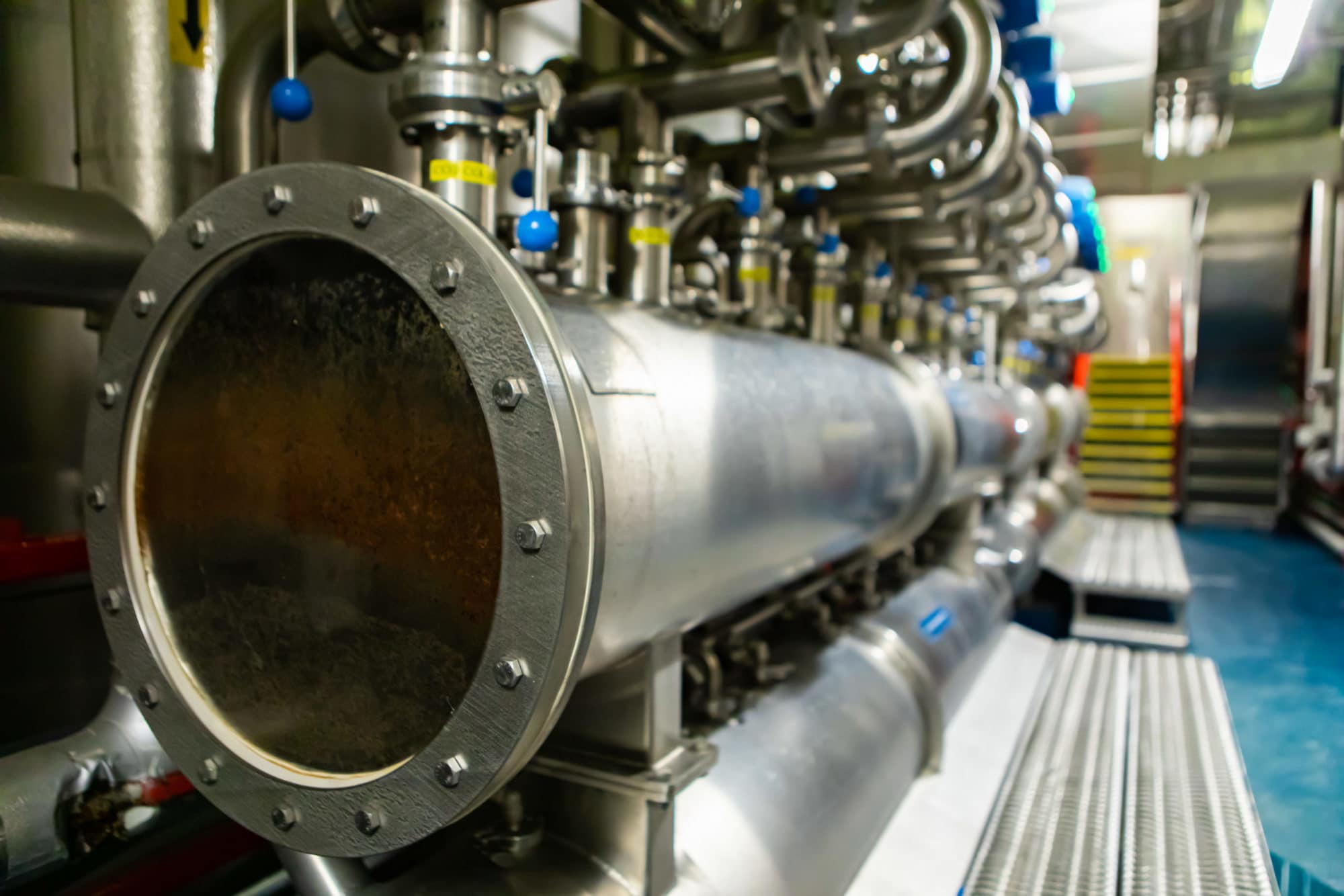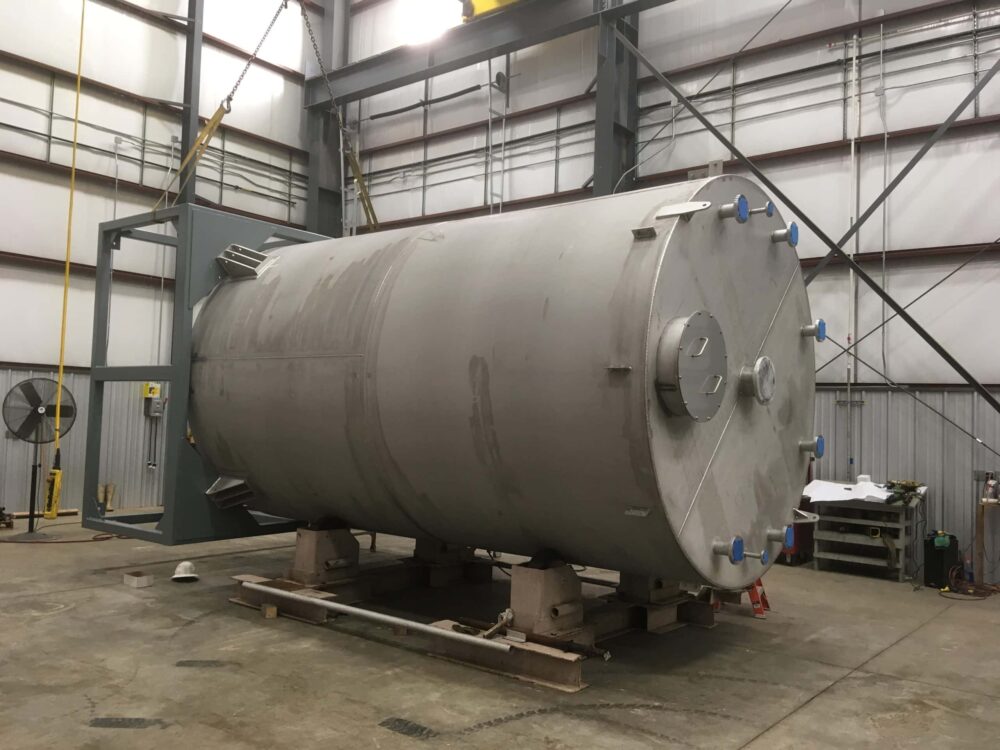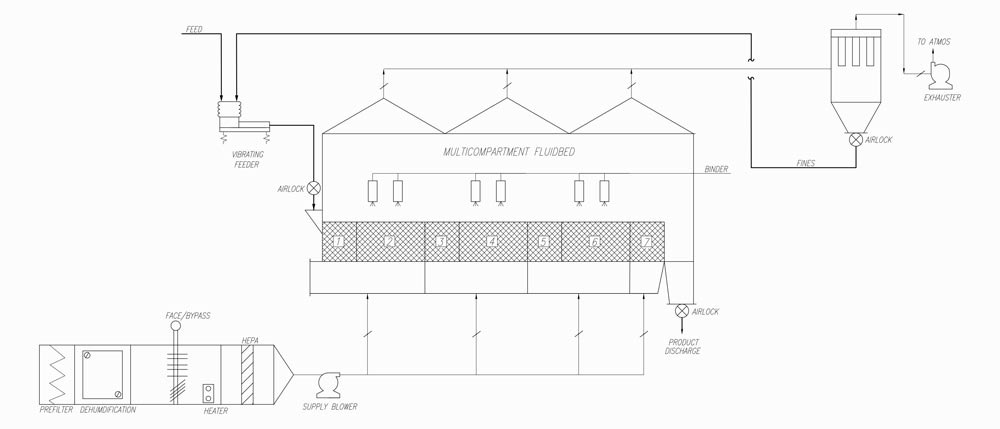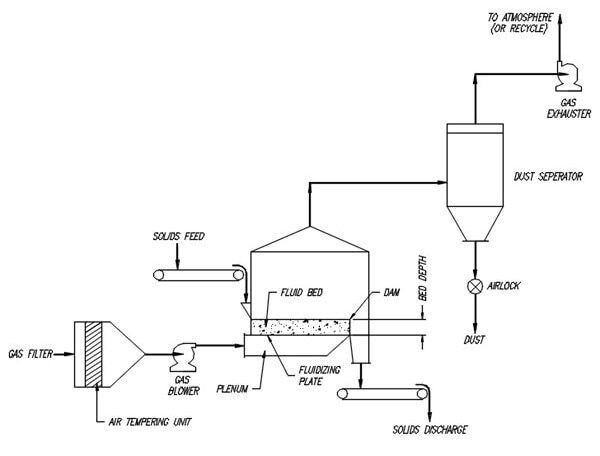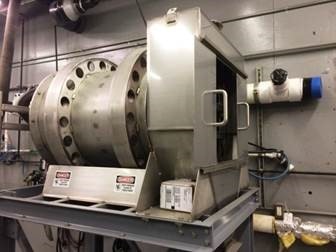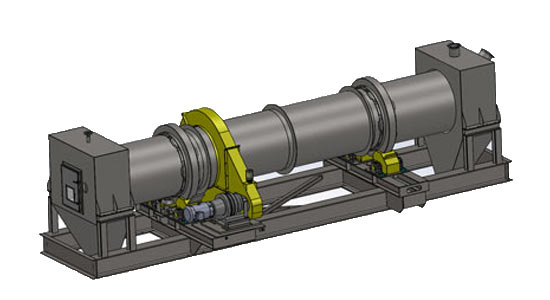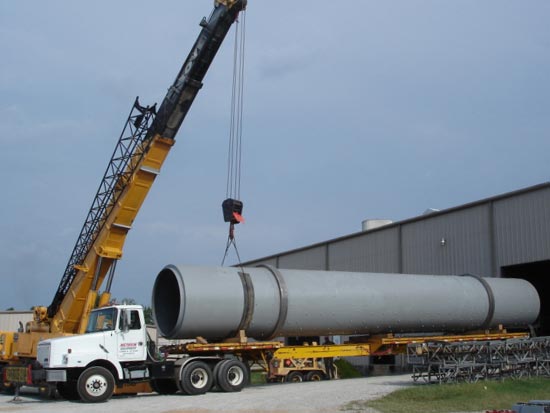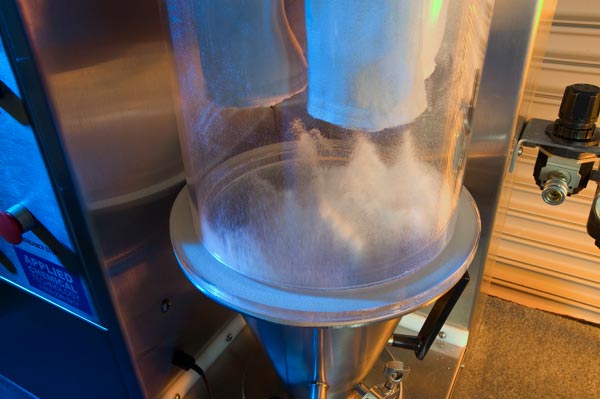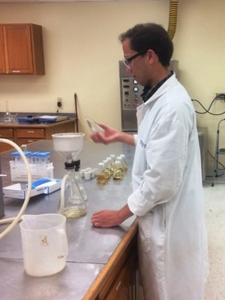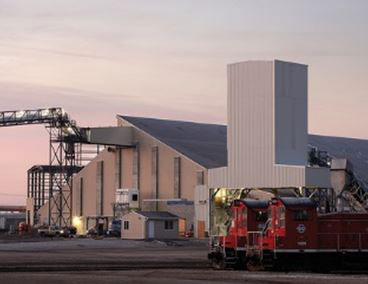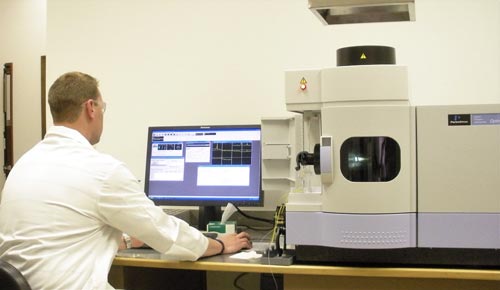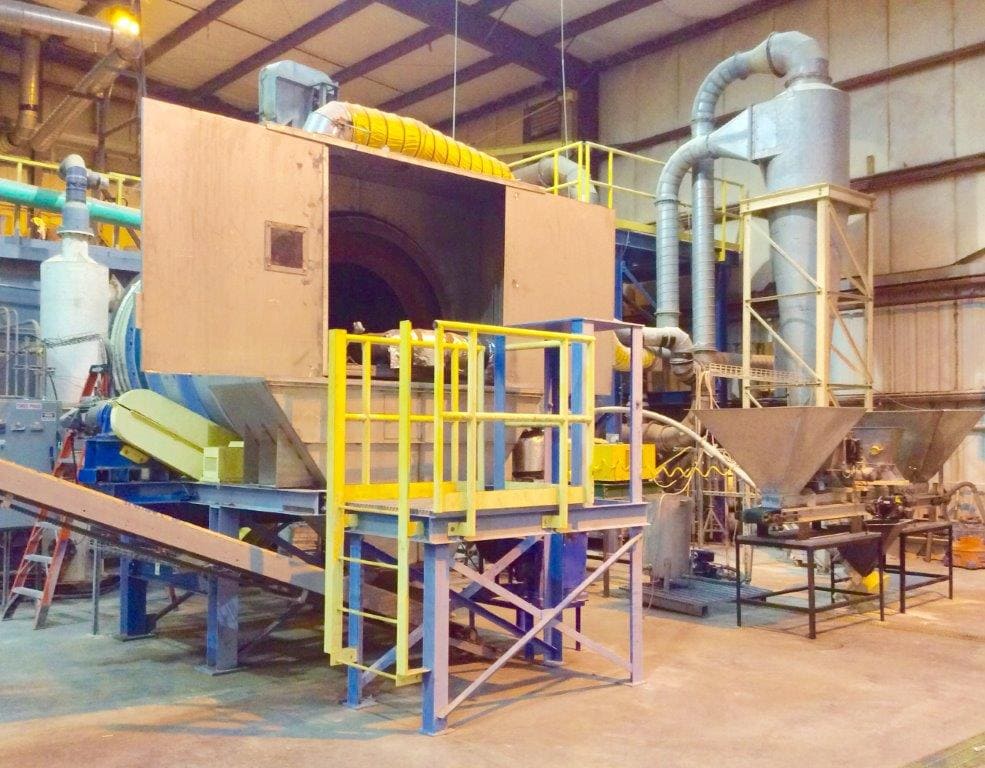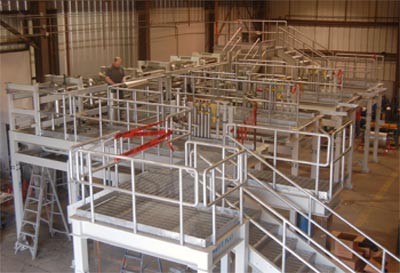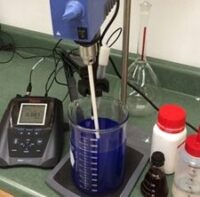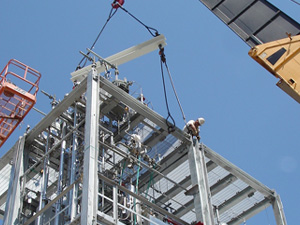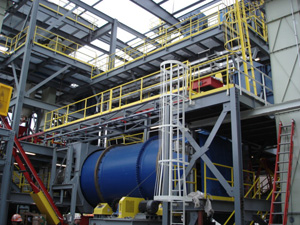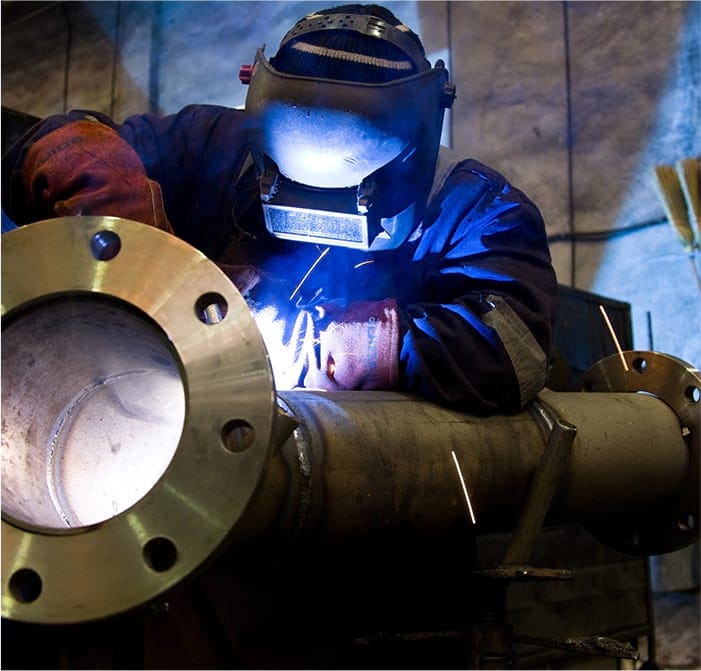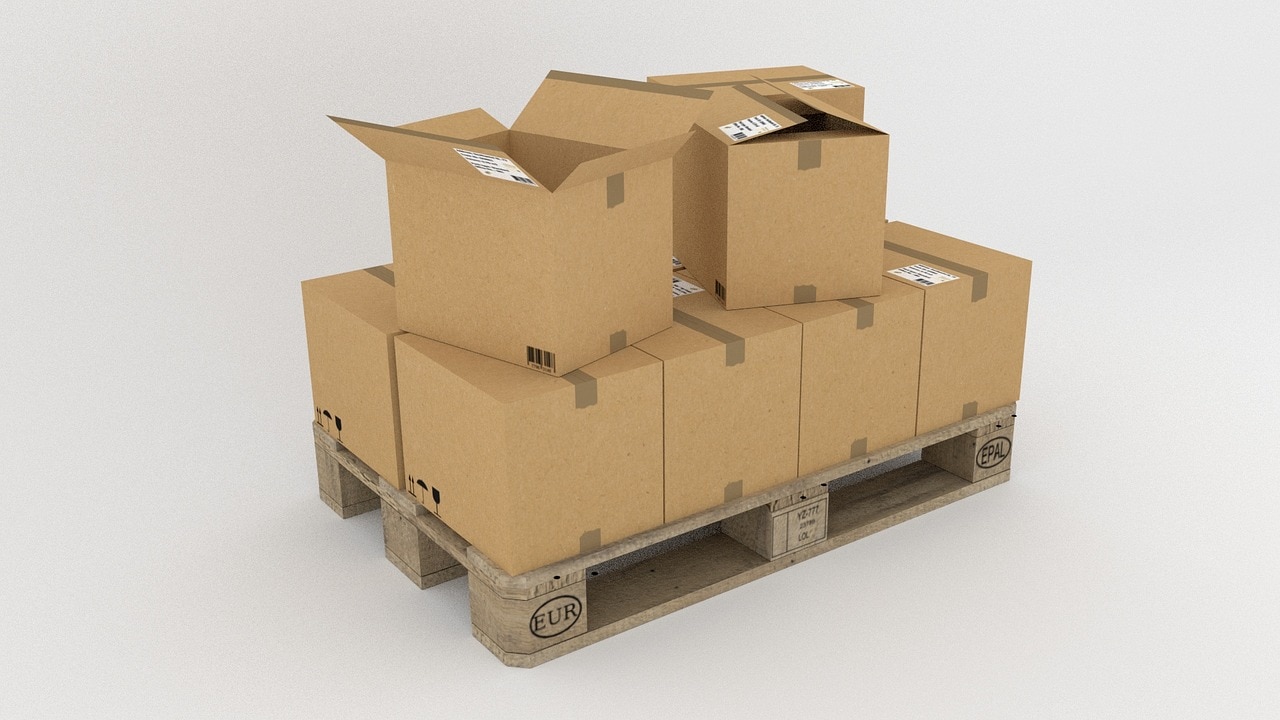Rotary Drum Drying with Solvent Recovery
Applied Chemical Technology (ACT) builds rotary vacuum dryers designed for ruggedness, quality, and safety. Our rotary vacuum dryers are ideal for products that are heat sensitive or involve hazardous materials found in industries such as chemical, pharmaceutical, food, plastics, and metal powders. In addition to rotary vacuum dryers, we design and build rotary vacuum drying systems for those looking for a total vacuum drying solution.
Our shop is an ASME Division 1 pressure vessel shop capable of building ASME U stamped vacuum dryers for handling hazardous materials. We design and build dryers which include inert gas purging for control in potentially explosive conditions. Our drums can include a tilting base for easy change of materials between batches.

Rotary Vacuum Dryer
Diameters: Up to 48 inches
Lengths: Up to 60 inches
ASME: U Stamped
- Vitamins
- Pharmaceutical – antibiotics
- Fine Chemicals
- Pesticides
- Insecticides
- Organic Chemicals





